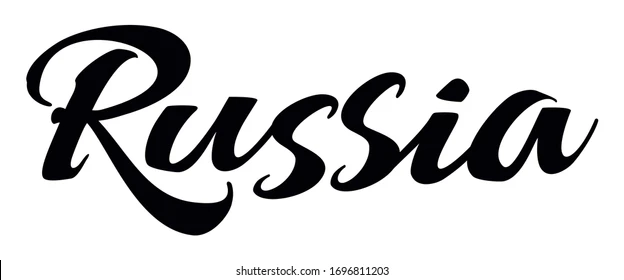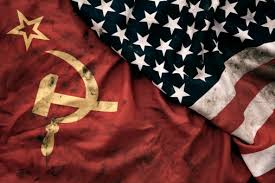This week we will have a look at Russia during the twentieth
century, this was a period of immense political, social, and economic upheaval,
marked by revolution, civil war, and the rise of communism.
The century began with the Tsarist empire, ended with the
collapse of the Soviet Union, and saw the country transform into a communist
state. Key events include the Russian Revolution, World War I, the rise of
Joseph Stalin, the Cold War, and the eventual disintegration of the Soviet
Union.
St Petersburg early 20th Century
Russia's participation in the war contributed to the social and
political unrest that led to the February Revolution in 1917. This is when
the monarchy was overthrown, and the Bolsheviks, led by Vladimir Lenin, seized
power, establishing the world's first communist society. This marked a
shift from autocratic rule to a communist regime. This was known as the
Russian Revolution’.
The country found themselves with a civil war which lasted
between 1918-1922, this saw the Bolsheviks fighting against various
anti-communist forces, ultimately solidifying their control over the country.
After the civil war Russia united with other republics to form
the Union of Soviet Socialist Republics (USSR).
The Soviet Union was composed of 15 Soviet Socialist
Republics (SSRs). These republics were: Russia, Ukraine, Belarus, Moldova,
Lithuania, Latvia, Estonia, Georgia, Armenia, Azerbaijan, Kazakhstan,
Uzbekistan, Kyrgyzstan, Tajikistan, and Turkmenistan.
It was at this time that Joseph Stalin became the dominant
leader, implementing policies of industrialization, collectivization of
agriculture, and widespread repression.
During the second world war The Soviet Union fought against Nazi
Germany and the Axis powers, suffering immense casualties but ultimately
contributing to the Allied victory.
At first The Soviet Union officially maintained neutrality
during WW2 but cooperated with and assisted Germany. However, after Nazi
Germany attacked the USSR on June 22, 1941, the country allied with the United
Kingdom and then the United States after the latter joined the war in December
1941.
On 22 June 1941, Adolf Hitler launched Operation
Barbarossa, an invasion of the Soviet Union with the largest invasion
force in history.
Hitler had always wanted to see Germany expand eastwards to gain
Lebensraum or 'living space' for its people. After the fall of France Hitler
ordered plans to be drawn up for an invasion of the Soviet Union. He intended
to destroy what he saw as Stalin's 'Jewish Bolshevist' regime and establish
Nazi dominance.
Soviet forces launched a counteroffensive against the Germans arrayed at Stalingrad in mid-November 1942. They quickly encircled an entire German army, more than 220,000 soldiers. In February 1943, after months of fierce fighting and heavy casualties, the surviving German forces—only about 91,000 soldiers—surrendered.
After the second world war the country known as East Germany,
officially the German Democratic Republic (GDR), was formed in October 1949
within the Soviet occupation zone of Germany following World War II. The
Socialist Unity Party of Germany (SED), led by Walter Ulbricht, played a key
role in its establishment and subsequent governance. The GDR was
established as a communist state within the Soviet zone, marking the beginning
of the Cold War division of Germany.
Between 1947-1991 saw what was known as the Cold War, this was the
ideological and political rivalry between the Soviet Union and the United
States shaped global politics and led to an arms race.
The Cold War was a period of geopolitical tension between
the United States and the Soviet Union. It was characterized by an ideological
struggle between capitalism and communism, a nuclear arms race, and proxy wars,
but no direct military conflict between the two superpowers.
The Soviet Union collapsed in 1991 due to a combination of
internal factors like economic stagnation, overextension of the military, and
rising ethnic tensions, along with the influence of the Cold War and US policy
of containment.
Mikhail Gorbachev's reforms, including perestroika (economic
restructuring) and glasnost (openness), while intended to revitalize the Soviet
system, inadvertently accelerated its demise.
The Soviet economy was struggling with low productivity,
inefficient planning, and a lack of innovation. They were heavily invested
in a large military, especially during the Cold War, which strained its
economy.
As the USSR was a vast empire with numerous ethnic groups, it was
natural that many would feel oppressed and sought greater autonomy or
independence.
Gorbachev's reforms, while intended to address the economic
problems, also opened the door for more political and cultural
freedom. This led to increased criticism of the government, rising
nationalist sentiments, and the weakening of the Communist Party's grip on
power.
In 1991, hardliners attempted to overthrow Gorbachev, but the
coup failed due to a lack of support from the military.
After the failed coup, the Soviet Union's republics began
declaring their independence, and Gorbachev resigned as president. The
Soviet Union was formally dissolved on December 26, 1991.
The collapse of the Soviet Union had a profound impact on the
world, leading to the end of the Cold War, the emergence of new nations in
Eastern Europe and Central Asia, and a shift in global power dynamics.
That will do it for this post more about Russia next Monday.














Such interesting history about Russia, Jo-Anne. Too bad that Putin is in charge and wants to take back lands they once had as the Soviet Union. He is truly evil. Blessings for a good week!
ReplyDeleteMartha, I hope you will try learn more about Russia. Your hatefulness truly takes my breath away. Blessings indeed...
DeleteHi Martha, I am glad you found the post interesting, I also don't like Putin, this is not a country that has a lot of freedom in it because of those like Putin
DeleteSandi I will be doing another post about Russia next week so people can learn a bit more about Russia now days
DeleteI remember those Cold War times in elementary school. In San Francisco we had a wear dog tags with our blood type on it and we would have drills and had to go to our group accordingly to blood type. I’m type 0 negative and it was just me and one boy. I remember worrying about nuclear war as a child.
ReplyDeleteThat doesn't sound very nice at all and yeah somewhat scary, having to wear a dog tag like a solider sounds weird but I guess it was just the way it was at the time
DeleteYou did well with that history Jo-Anne and I enjoyed reading it.
ReplyDeleteThanks I am pleased you liked it
DeleteWow that is quite a history. 1991.. I always felt the dissolution of USSR went even farther back.
ReplyDeleteYeah I thought it happened sometime in the 80's but nope 1991 was the year
DeleteRussia is fascinating and savagely evil at times- the governments, that is, not so much the common man. The civil wart seemed from the outside like good vs evil, but the anti-communists just wanted to replace the new, corrupt system with the old, corrupt system.
ReplyDeleteThat is so very true, I am glad I don't live there
Delete